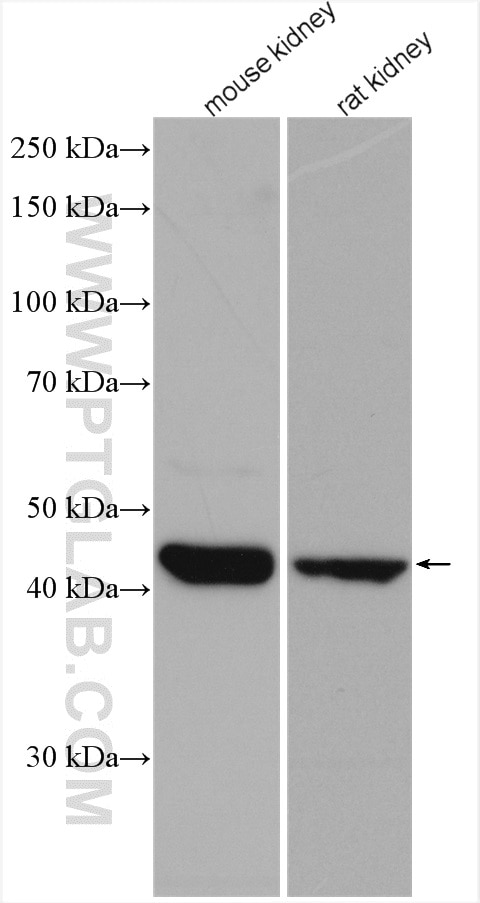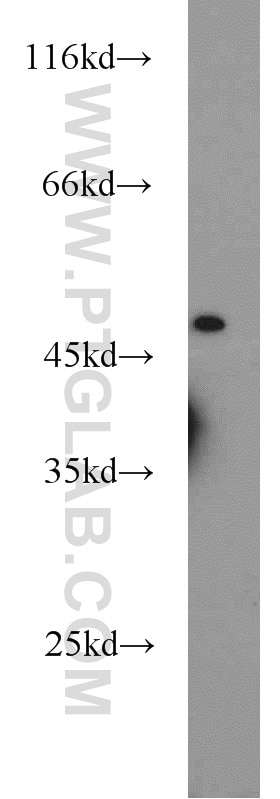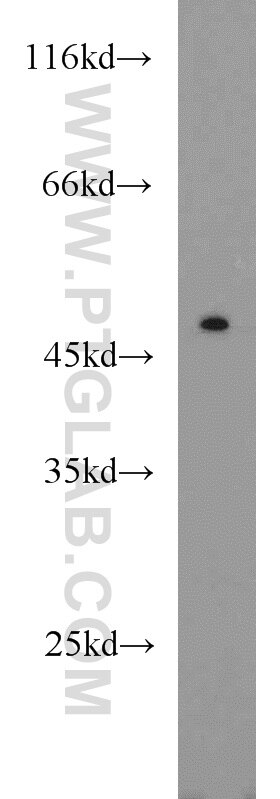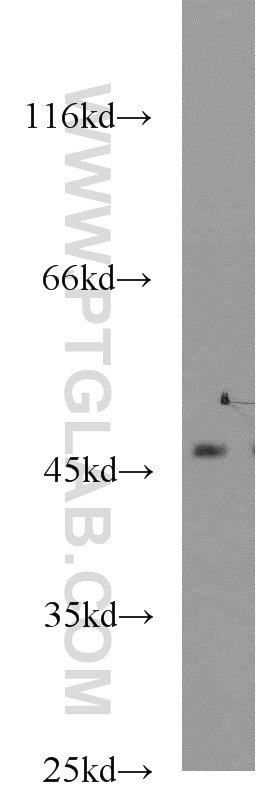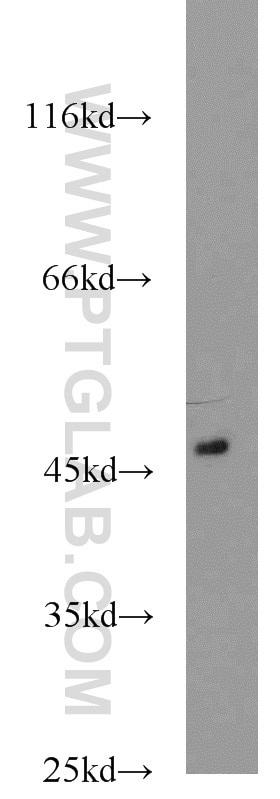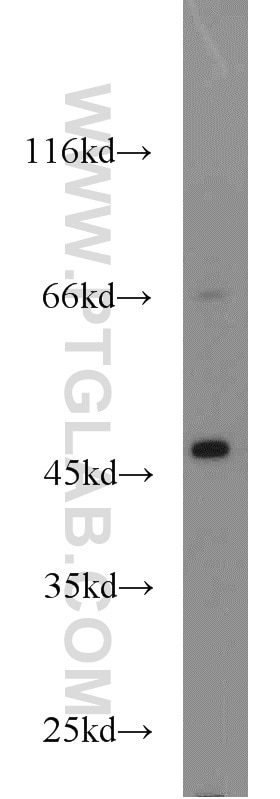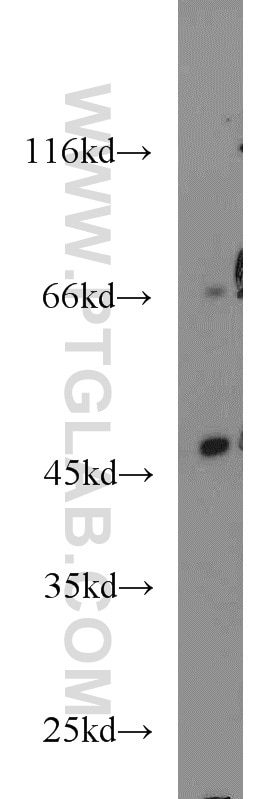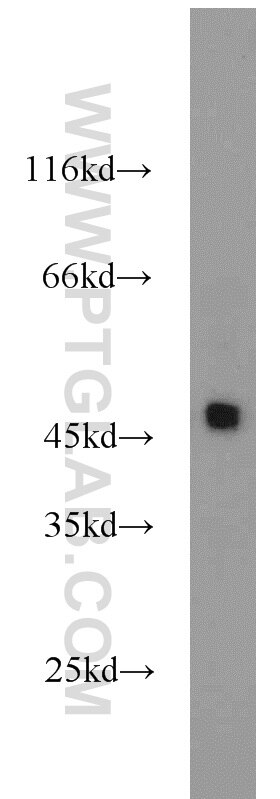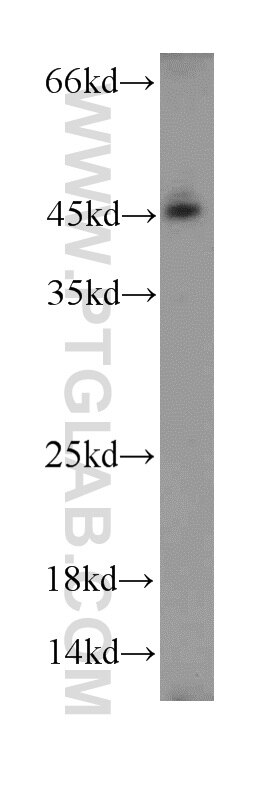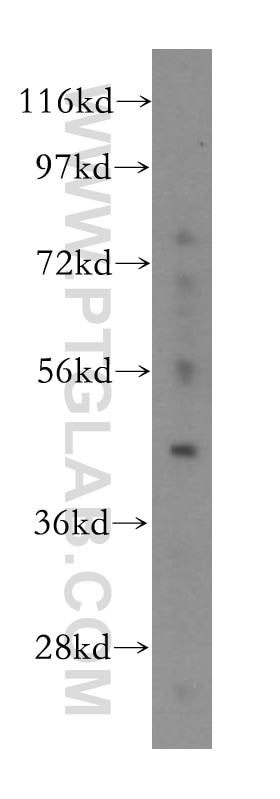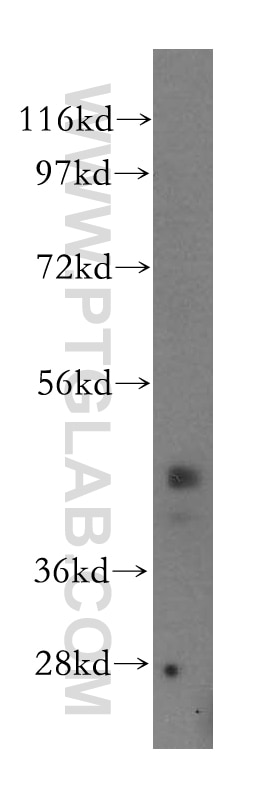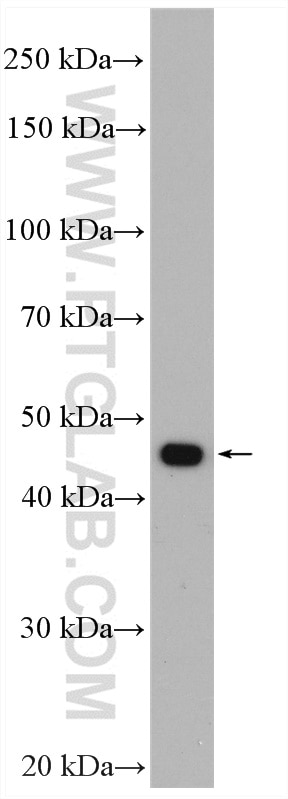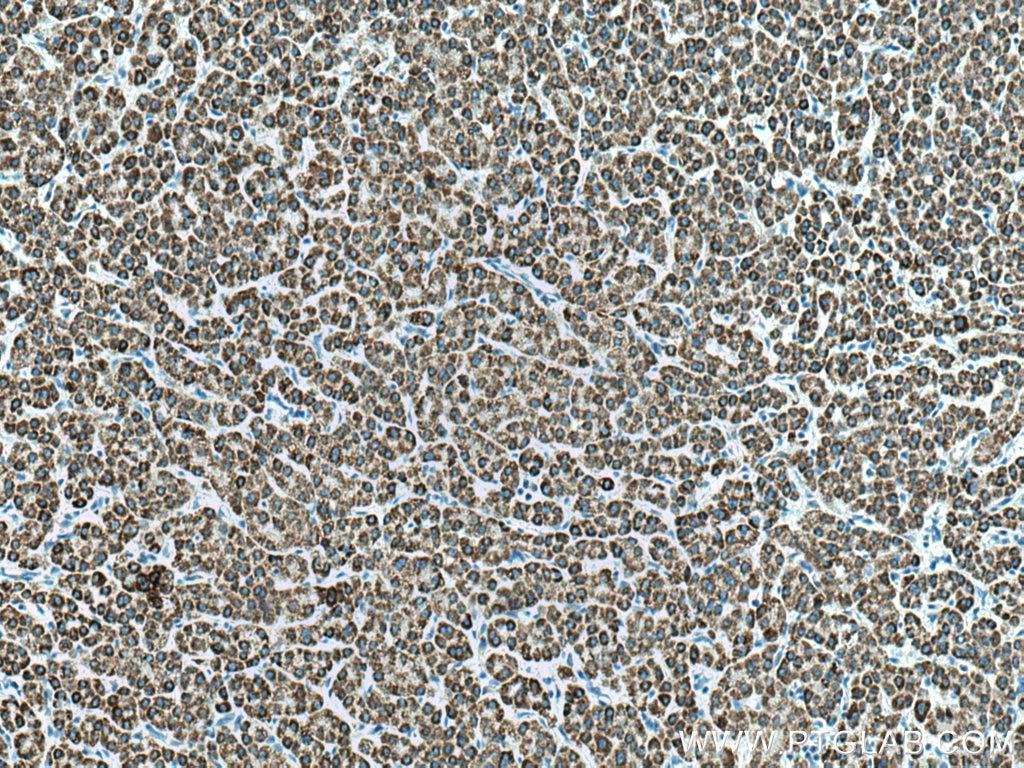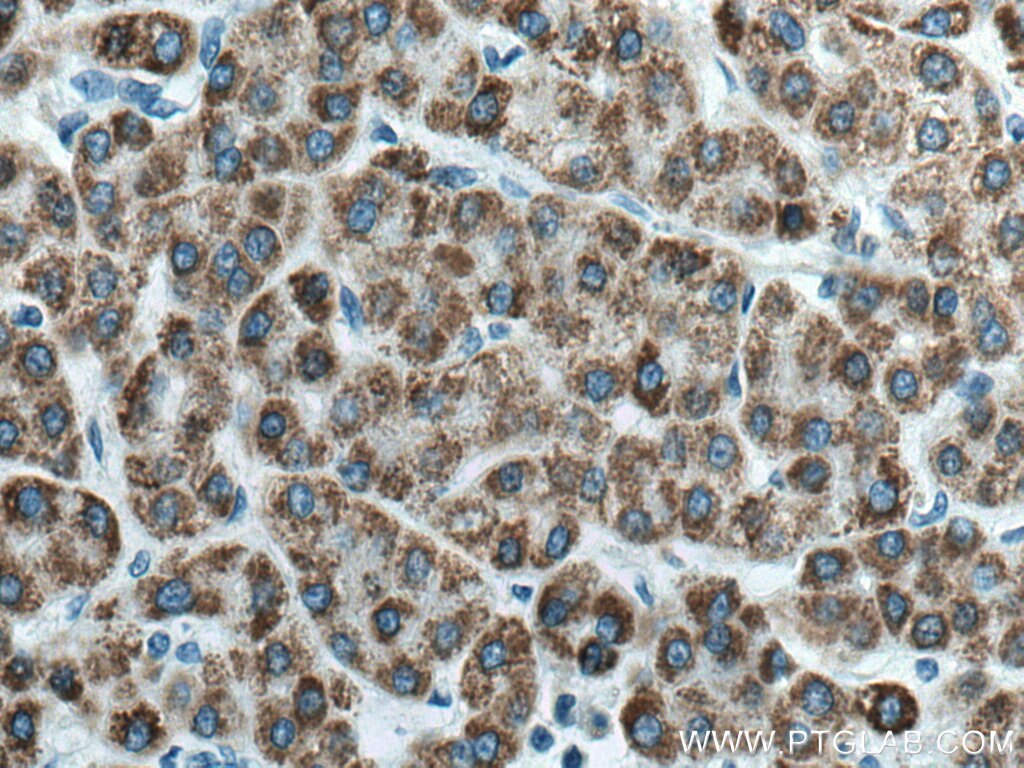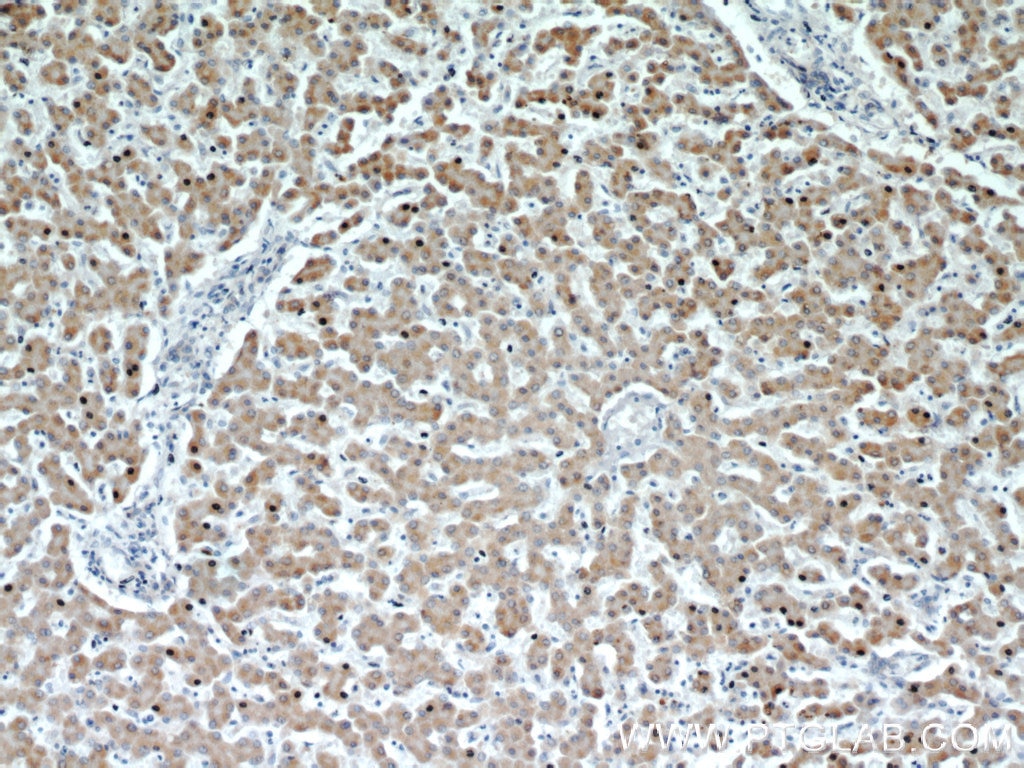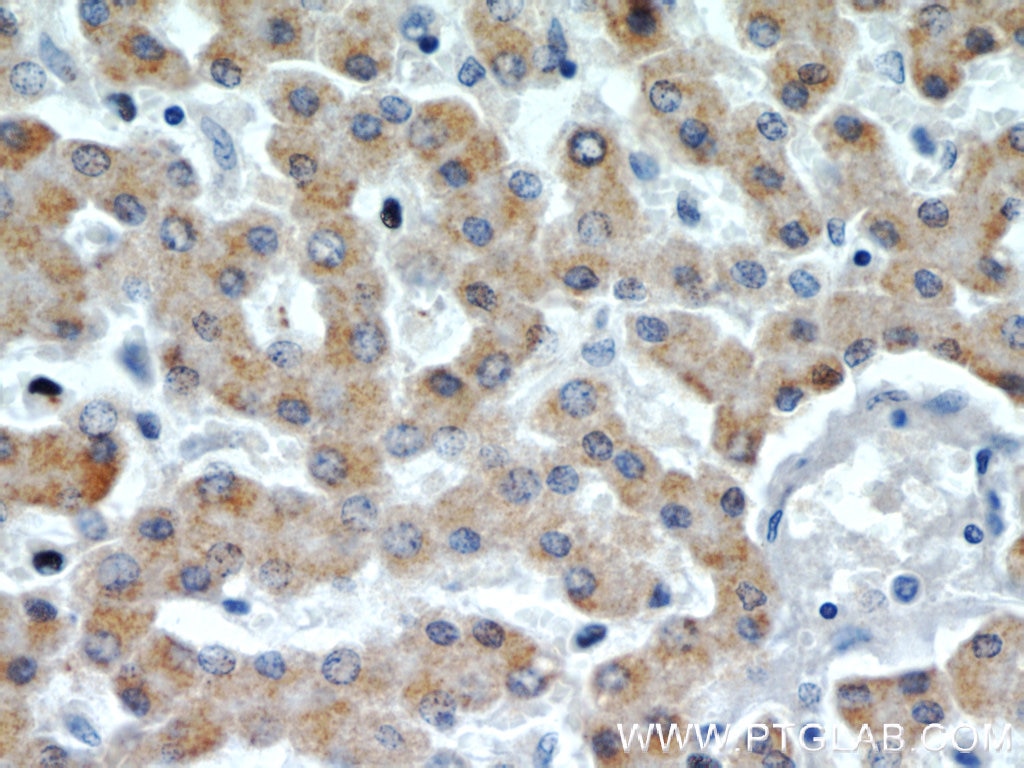ACADL Polyklonaler Antikörper
ACADL Polyklonal Antikörper für WB, IHC, ELISA
Wirt / Isotyp
Kaninchen / IgG
Getestete Reaktivität
human, Maus, Ratte
Anwendung
WB, IHC, ELISA
Konjugation
Unkonjugiert
Kat-Nr. : 17442-1-AP
Synonyme
Geprüfte Anwendungen
| Erfolgreiche Detektion in WB | Mausnierengewebe, HEK-293-Zellen, HeLa-Zellen, HepG2-Zellen, NIH/3T3-Zellen, Rattennierengewebe |
| Erfolgreiche Detektion in IHC | humanes Leberkarzinomgewebe, humanes Lebergewebe Hinweis: Antigendemaskierung mit TE-Puffer pH 9,0 empfohlen. (*) Wahlweise kann die Antigendemaskierung auch mit Citratpuffer pH 6,0 erfolgen. |
Empfohlene Verdünnung
| Anwendung | Verdünnung |
|---|---|
| Western Blot (WB) | WB : 1:1000-1:6000 |
| Immunhistochemie (IHC) | IHC : 1:100-1:500 |
| It is recommended that this reagent should be titrated in each testing system to obtain optimal results. | |
| Sample-dependent, check data in validation data gallery | |
Veröffentlichte Anwendungen
| WB | See 5 publications below |
| IHC | See 1 publications below |
Produktinformation
17442-1-AP bindet in WB, IHC, ELISA ACADL und zeigt Reaktivität mit human, Maus, Ratten
| Getestete Reaktivität | human, Maus, Ratte |
| In Publikationen genannte Reaktivität | human, Maus, Ratte |
| Wirt / Isotyp | Kaninchen / IgG |
| Klonalität | Polyklonal |
| Typ | Antikörper |
| Immunogen | ACADL fusion protein Ag11530 |
| Vollständiger Name | acyl-Coenzyme A dehydrogenase, long chain |
| Berechnetes Molekulargewicht | 430 aa, 48 kDa |
| Beobachtetes Molekulargewicht | 45-48 kDa |
| GenBank-Zugangsnummer | BC039063 |
| Gene symbol | ACADL |
| Gene ID (NCBI) | 33 |
| Konjugation | Unkonjugiert |
| Form | Liquid |
| Reinigungsmethode | Antigen-Affinitätsreinigung |
| Lagerungspuffer | PBS with 0.02% sodium azide and 50% glycerol |
| Lagerungsbedingungen | Bei -20°C lagern. Nach dem Versand ein Jahr lang stabil Aliquotieren ist bei -20oC Lagerung nicht notwendig. 20ul Größen enthalten 0,1% BSA. |
Hintergrundinformationen
ACADL(Long-chain specific acyl-CoA dehydrogenase, mitochondrial) is also named as LCAD and belongs to the acyl-CoA dehydrogenase family.It catalyzes the first reaction of the mitochondrial β-oxidation of fatty acids and is synthesized in the cytosol as a precursor that is larger than its mature from. The size difference between the precursor and mature rat LCAD has been estimated to be 3 kDa on the basis of SDS-PAGE(PMID:1774065).Defects in ACADL are a cause of acyl-CoA dehydrogenase very long-chain deficiency (ACADVLD).
Protokolle
| PRODUKTSPEZIFISCHE PROTOKOLLE | |
|---|---|
| WB protocol for ACADL antibody 17442-1-AP | Protokoll herunterladen |
| IHC protocol for ACADL antibody 17442-1-AP | Protokoll herunterladenl |
| STANDARD-PROTOKOLLE | |
|---|---|
| Klicken Sie hier, um unsere Standardprotokolle anzuzeigen |
Publikationen
| Species | Application | Title |
|---|---|---|
Nat Commun Enoyl-CoA hydratase-1 regulates mTOR signaling and apoptosis by sensing nutrients. | ||
J Transl Med Identification and experimental validation of KMO as a critical immune-associated mitochondrial gene in unstable atherosclerotic plaque | ||
Front Pharmacol Lipidomics reveals the potential mechanism of honokiol against adenine-induced chronic kidney disease | ||
Front Pharmacol The serum acylcarnitines profile in epileptic children treated with valproic acid and the protective roles of peroxisome proliferator-activated receptor a activation in valproic acid-induced liver injury | ||
Diabetologia Chaperonin counteracts diet-induced non-alcoholic fatty liver disease by aiding sirtuin 3 in the control of fatty acid oxidation | ||
Cancer Metab A HIF-1α inhibitor combined with palmitic acid and L-carnitine treatment can prevent the fat metabolic reprogramming under hypoxia and induce apoptosis in hepatocellular carcinoma cells |
